“The listener stumbles blindly in the darkness of sound, and is himself revealed in any light generated.” – Salomé Voegelin
By Ana Rosa Ibáñez | Images Courtesy Institute for Sound and Music Berlin
From the 29th of march until april 22nd, an immersive sound installation created by the Institute for Sound & Music Berlin was installed in the principal hall of Martin Gropius Bau Museum. ISM was integrated already a few years ago, with the intention of responding to the big percentage of residents and visitors of Berlin whose basic interests incorporate sound, audiovisual and electronic music culture; athirst for new universes where they their senses can be subjected to new stimuli that go beyond the well-known electronic clubbing circuit around the city.
The Hexadome –revealed by its name– consisted in a 6-wall dome, made of screens for visual projections, designed by the digital media studio Pfadfinderei, and containing the “Klangdom” – a sound system of multichannel loudspeakers developed by ZKM | Institute for Sound and Acoustics. During the course of a month, the artists (partially curated by Norient – Network for Local and Global Sounds and Media Culture) were invited in teams to intervene the installation in a visually and sonically, creating immersive experiences in a sonic space week after week. Some of them having a larger trajectory, like Brian Eno or Thom Yorke; but also incorporating emergent artists that nonetheless are leading today the channels of experimental sound; like Holly Herndon, who had just presented her work in CTM festival during the first weeks of february.
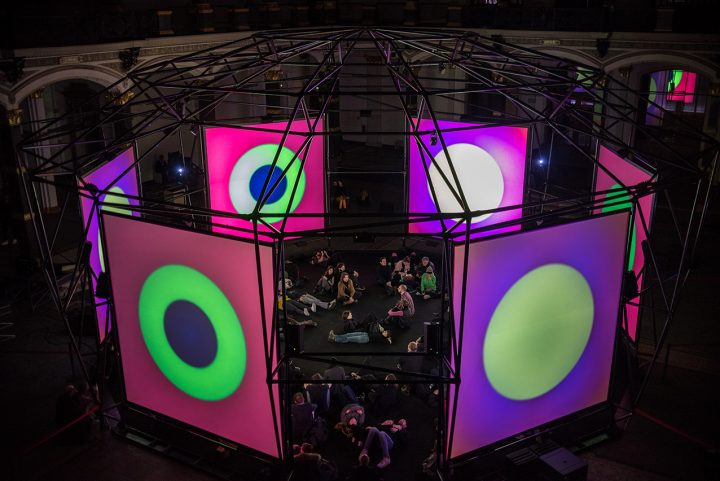
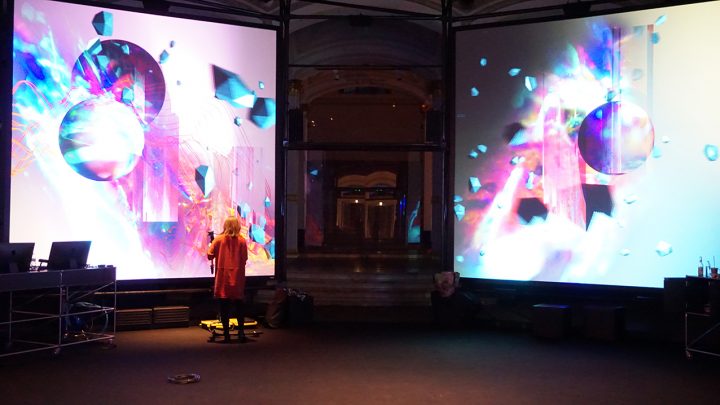
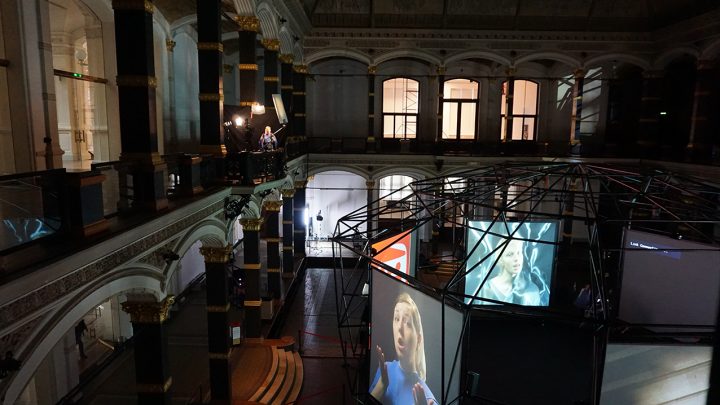
The installation was displayed in the main hall of Martin Gropius Bau Museum, in the centre of Berlin. The sound vibrations could already be perceived before entering the physical space, the classical marble reception of the building menaced by the sonic distortion coming from the intervention. Already in that mindset, the crossing of the threshold that led us to the Hexadome confronted the visitors with a perspective that managed to finally dislocate the bodies from the space of the museum, being transported to a chromatic cocoon which would act as the spaceship for the immersive journey. The proximity between the people altered –immediately accentuated; the high-quality sound invasion that diluted the boundaries of personal space, connected our sub-consciousness through our eardrums.
We were suspended in a digital forest – a space for binary nature – slipping down the tectonic layers towards the center of an earth programmed. The listeners were scattered around on the floor extatic, shocked, some of them in slight despair. Moments of acute noise dismembered the limits of our own thoughts, cornering us in our own consciousness, facing ourselves with our own selves. During the brief sound breaks in which the space regained its normal form, the sights wandered disoriented around the high dome of the museum looking for glimpses of reality, briefly though being dragged back into the mycelium that connected the organic and digital.
“I am at this moment nothing but the heard, equally formless and quietly strident.” [1]
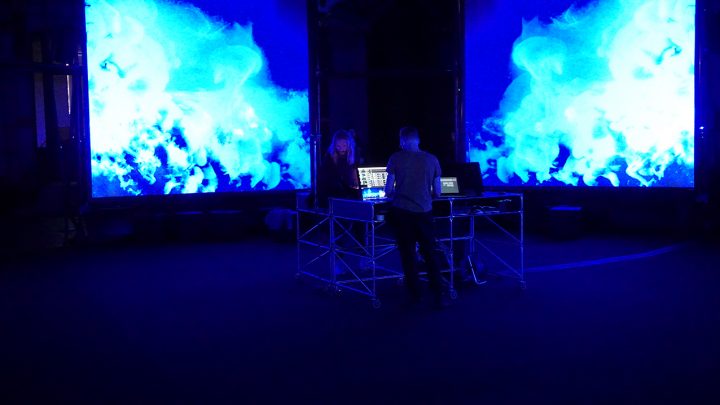
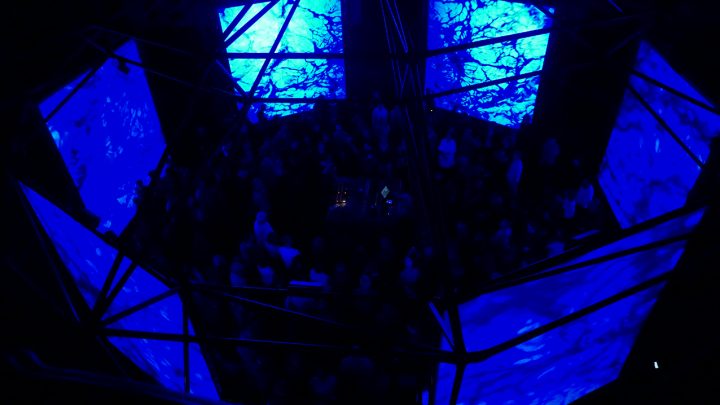
The succession of interventions expressed from the diversity of the artists’ perceptions, wrapped the listener with a variety of understandings and assimilations that sound might provoke in the body; also the effect and distortion that it may bring about in the space, interrogating the limits of a rationalized reality. How do we explain in a rational way the perceptual mutation of space? The variabilities among the encounters between the intention of the artists and each of the listener’s perception of the work? What was the person next to me experiencing during this unstable and subjective pass of time?
The Hexadome’s aesthetics and technology was a strong evidence of the re-valorization that is experiencing Hearing and Sound as a way of understanding reality, of creating environments, specially in the contemporary arts. Although this is only one among the many initiatives –in the city and internationally– that are mixing the advanced technologies, with the world of electronic culture and immersive arts, the dome successfully managed to present the listener with creative perspectives on experiencing sound, bringing to awareness how our bodies and context are constantly being affected and shaped by its melody, fluidity and vibration.
“(Noise) negates the cohesion and purpose of mass movement, and retreats from the conquest over human frailty and failure by the machine to the celebration of the incoherent nature of being, in splendid isolation, human.” [2]
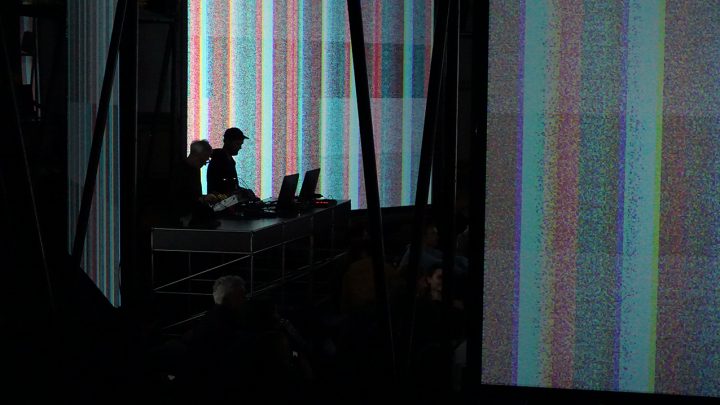
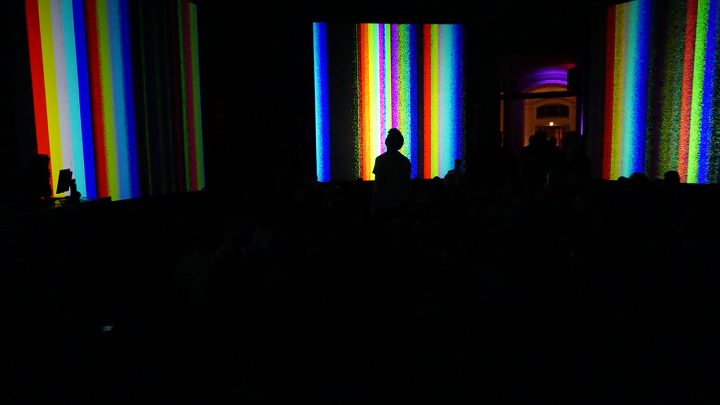
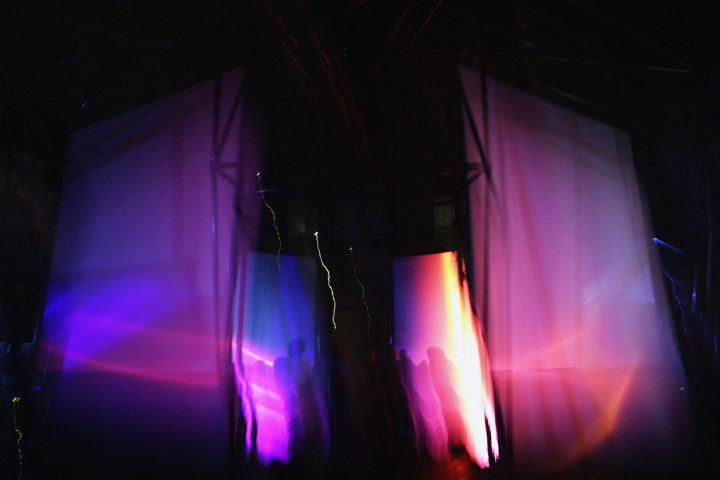
Institute for Sound and Music Berlin
ISM Hexadome Comissioned artists:
Brian Eno (installation)
Tarik Barri & Thom Yorke (installation)
Tarik Barri (installation / live performance)
Holly Herndon & Mathew Dryhurst (installation / live performance)
Frank Bretschneider & Pierce Warnecke (installation / live performance)
Lara Sarkissian & Jemma Woolmore (installation /live performance)
Ben Frost & MFO (installation / live performance)
Peter van Hoesen & Heleen Blanken (installation / live performance)
Howie Lee & Michael Tan (installation / live performance)
Pfadfinderei & René Löwe (installation / live performance)
Notes:
[1] Voegelin, S. (2010). Listening to noise and silence :Towards a philosophy of sound art. New York: The Continuum International Publishing Group Inc., pp. 49.
[2] Ibid pp. 51.

 Español
Español